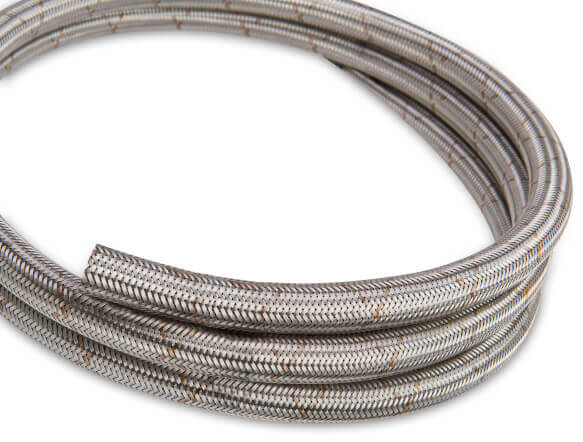Early drag racers learned that it made sense to mount the fuel tank on the front of their hot rod. Here, the g-forces against the fuel would aid in its delivery to the engine. As hot rods got faster, engines got larger, and fuel demands increased along with them. The need for a better fuel system helped several aftermarket companies establish themselves. Naturally, the tricky part of this development was with the carburetors. They maintained the original float design, which meant pressure had to be limited to what the needle-and-seat assemblies could handle.
You’re probably not facing this scenario, so we’ll re-focus on your street machine. You probably still plan on keeping the fuel tank in the back of the car, and you’re probably planning on making a lot more horsepower than the factory ever offered the year it was manufactured. That said, you want a fuel system that is safe, capable of feeding your engine all the fuel it needs at wide-open throttle, and is also safe enough to not keep you awake at night. Are we on target? To help you learn what should be considered when designing a fuel system, we reached out to the folks at Holley.
Ideally, you’ll have the luxury to plan your entire system at once. Sure, you can upgrade your system bit by bit, over time. But, you’ll be dealing with existing limitations, modifying less-than-ideal components, and pairing things that were not designed to work together. Sure, it’s possible, but it’s not ideal.
If you were able to design an entire fuel system, you’d probably want to do some math first. Luckily, there are some established formulas to help you determine what your engine needs. There are a couple of different ways to determine those needs, and we’ll cover all of them.
Do The Math
In order to calculate the fuel system requirements for your project, you can use the horsepower or displacement of your engine, or (especially for drag racers), we can use the maximum amount of g-force your car sees at launch.
As part of the calculation, you’ll also have to determine how much fuel the engine uses versus how much power it produces. This is called the brake-specific fuel consumption (BSFC), and the formula is calculated by measuring the engine’s fuel consumption and dividing it by the power the engine makes. It looks like this: pounds of fuel used per hour ÷ horsepower = BSFC. A lower number…
Click Here to Read the Full Original Article at DragzineDragzine…

